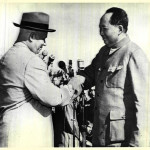
In October 1917, Bolshevik revolutionaries seized power in Russia and began transforming it into a socialist nation. The Soviet Union, as Russia was later renamed, became a global superpower and a model and mentor for socialist movements everywhere. The Soviet Union also influenced the development of 20th century China, supporting both the Guomindang and the Chinese Communist Party. Mao Zedong had conflicted views about the Soviet Union. As the world’s largest and oldest socialist state, and a powerful neighbour of China, Mao understood the importance of the Soviet Union and the value of maintaining ties with Moscow. But Mao felt undervalued and disregarded by Joseph Stalin, the Soviet Union’s dictatorial leader, while developments in the 1950s placed further strain on Sino-Soviet relations. What followed was the Sino-Soviet split, a breakdown in cooperation and diplomatic relations that almost produced a war between China and the Soviet Union.
The ties between Chinese communists and Soviet Russia date back to 1919 and the formation of the Communist International (or Comintern). The Comintern was a Moscow-based agency created by Bolshevik leader Vladimir Lenin. Its mission was to promote international socialism and provide advice, leadership and support for socialist movements around the world. As described on earlier pages, the Comintern played an important role in the formation and direction of the Chinese Communist Party (CCP). For the entire 1920s the CCP’s organisation, ideology and methodology followed instructions and advice from Moscow. The Comintern also provided support to Sun Yixian, the Guomindang and the Huangpu Military Academy, believing that China was ready for a democratic-capitalist revolution but not a socialist revolution. When Mao Zedong gained control of the CCP in the mid-1930s he rejected this view, arguing that China was ready for a socialist revolution driven by the peasantry. The CCP’s embrace of ‘Mao Zedong Thought’ marked the start of ideological divisions between Chinese communists and the Soviet Union.
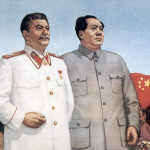
In October 1949 the CCP claimed victory and formed the People’s Republic of China. Socialist regimes now held power across one-fifth of the globe, ruling a combined population of almost 800 million people. Maintaining a friendly and productive relationship between Moscow and Beijing was crucial for the advancement of global socialism. In late 1949 Mao travelled to Moscow to meet Joseph Stalin for the first time. Recognising the need for unity at a time of growing opposition to socialism, Stalin and Mao signed a bilateral treaty called the Treaty of Friendship, Alliance and Mutual Assistance. Among its terms was a military alliance: if either China or the Soviet Union was attacked, the other would come to their assistance. More important to China were the treaty’s economic benefits, including a $300 million Soviet loan and the provision of Russian technical advisors. During the 1950s thousands of scientific, industrial and technical experts from Soviet Russia lived and worked in China. Their advice and leadership played an important role in the growth of heavy industry there. Drawing on the advice of Soviet economic strategists, Beijing committed itself to Stalinist models of development – including funding industrial growth with surpluses produced by collectivised agriculture.
Despite this successful collaboration there were also signs of strain between Moscow and Beijing. Mao’s 1949 visit to Russia produced a successful treaty, however privately Mao felt that Stalin treated him as an underling rather than an important partner. In mid-1950, Mao committed forces to the Korean War on the assumption that Stalin would involve Soviet forces and provide men, machinery and weapons. Stalin, however, did not wish to be drawn into open conflict with the United States. He confined Soviet involvement in Korea to air support and the sale of aircraft, weapons and munitions (for which he charged Beijing full price). While the Korean War was politically successful for the Chinese, the costs to its already depleted economy were enormous. Mao felt exploited and betrayed by Stalin, who had failed to honour his earlier assurances.
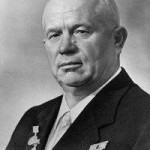
When Stalin died in 1953, Mao began to see himself as the world’s senior communist leader. Leadership of the Soviet Union passed to Nikita Khrushchev, a blunt, coarsely spoken party official who had shown impeccable loyalty to Stalin. In February 1956 Khrushchev delivered his famous ‘Secret Speech’, which condemned the personality cult, despotism, show trials, purges and violence that occurred under Stalin’s reign. Khrushchev’s denunciation of Stalin placed Mao in an awkward position. While Mao privately distrusted Stalin, in public he had always given Stalin his full backing. Stalin’s cult of personality was replicated by Mao and the CCP, who hailed Stalin as the benevolent and visionary leader of international socialism. For Mao, Khrushchev’s condemnations were a betrayal of Stalin’s legacy. The CCP responded by developing its own interpretation of Stalin and his leadership, which was articulated in the People’s Daily on April 5th 1956:
“Some people consider that Stalin was wrong in everything. This is a grave misconception. Stalin was a great Marxist-Leninist, yet at the same time a Marxist-Leninist who committed several gross errors without realizing that they were errors. We should view Stalin from a historical standpoint, make a proper and all-round analysis to see where he was right and where he was wrong and draw useful lessons therefrom. Both the things he did right and the things he did wrong were phenomena of the international communist movement and bore the imprint of the times. Taken as a whole the international communist movement is only a little over 100 years old and it is only 39 years since the victory of the October Revolution… Great achievements have been made, but there are still shortcomings and mistakes.”
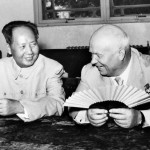
In October 1957 the Soviet Union and China signed a defence accord, with Moscow agreeing to share new military technologies, including nuclear weapons prototypes. Sino-Soviet relations began to worsen shortly after, mainly due to ideological differences. Khrushchev took a softer line on the West, suggesting that “peaceful coexistence” between communist and capitalist nations was possible. This view was unacceptable to Mao and the CCP, whose foreign policy revolved around anti-Western, anti-American propaganda. Khrushchev visited China in July 1958 but it did not go well. Khrushchev’s entourage was housed in dilapidated quarters without air conditioning, despite the sweltering heat. During the talks, Mao treated Khrushchev with arrogance and disdain, in a similar fashion to the way Mao was treated by Stalin in 1949. Mao refused to agree to Khrushchev’s proposed joint defence projects and Khrushchev responded by pulling most Soviet advisors out of China. Khrushchev visited China again the following year and infuriated Mao by delivering a speech praising US president Eisenhower and his foreign policy. This seven-day visit was so acrimonious it was trimmed to just three days.
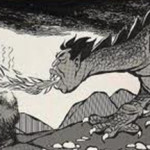
By this stage, Moscow was repudiating key terms of the 1949 military alliance. By 1960 the Treaty of Friendship, Alliance and Mutual Assistance was all but dead. In mid-1960 the Soviet Union pulled its remaining technical advisors out of China, leaving many infrastructure projects half finished. The war of words continued, including a series of verbal stoushes between Chinese and Russian delegates at party conferences in 1960 and 1961. In 1962, in the wake of the Cuban missile crisis, Mao accused Khrushchev of being afraid of the United States. When China and India went to war briefly in late 1962 over disputed borders, Moscow supported the Indians. By this time China and the Soviet Union were in a state of virtual non-cooperation, yet things deteriorated even further. In 1964 Mao Zedong claimed the Soviet Union was still in possession of Chinese territory, stolen during the reign of the tsars. In July of that year, he withdrew his ambassador and ended diplomatic communication with Moscow. Anti-Soviet propaganda inside China reached fever pitch. In August 1967, at the height of the Cultural Revolution, some 200,000 Maoist Red Guards laid siege to the Soviet embassy in Beijing.
“The newly available documents point to the role of ideology in the Sino-Soviet split. Both Chinese Communists and the Soviets were true believers in Marxist-Leninism. The discord between Beijing and Moscow arose over the method of establishing a socialist society domestically, and over the joint policy of the socialist camp toward the capitalist world. Furthermore, while ideology was central, it increasingly became entangled in internal politics. Leadership conflicts led Mao Zedong to exploit the worsening of Sino-Soviet relations for his own goals, abroad and at home.
Lorenz M. Luthi, historian
The most dangerous moments of the Sino-Soviet split came in the late 1960s. Disputes over a contested border in Xinjiang province in China’s remote north-west led to more angry words and a round of border talks that ultimately broke down. Through the second half of 1968, China and the Soviet Union built up their military presence in the region, to the point where more than 1.5 million soldiers were straddling the Ussuri River. In October 1968 Chinese defence minister Lin Biao said his forces were preparing for an invasion of Soviet territory. In March 1969 the first skirmishes were reported, with Chinese and Russian soldiers opening fire on Zhenbao Island. More clashes followed, leading to the resumption of talks in June. Between 350 and 700 soldiers, most of them Chinese, were killed in the intermittent fighting in Xinjiang. For a time the Soviet leadership even considered using nuclear weapons against its former ally. The death of Vietnamese communist leader Ho Chi Minh in September provided an opportunity for Chinese and Soviet leaders to restore diplomatic contact and resume border discussions. Relations between the two nations remained frosty, however, and the border dispute was not fully resolved for another decade.

1. Sino-Soviet relations began with the Russian Revolution of 1917, the formation of the Soviet Union and the Moscow Comintern, which provided support and direction for the fledgeling CCP.
2. In late 1949 Mao visited Stalin in Moscow. While Mao felt undervalued and disregarded by Stalin, the two leaders signed an important treaty and military alliance.
3. In public Mao and CCP propaganda hailed Stalin as a visionary leader of world socialism, however, in private Mao felt betrayed by Stalin’s lack of support and involvement during the Korean War.
4. In 1956 Nikita Khrushchev denounced the brutality that occurred under Stalin’s leadership. This condemnation of Stalin placed Mao in an awkward position and forced the CCP to reevaluate its position on Stalin.
5. Sino-Soviet relations continued to worsen from 1957, driven by ideological divisions, different attitudes to the West, provocative and hostile remarks, failed talks between Mao and Khrushchev, and border disputes that led to a brief conflict in 1969.
© Alpha History 2018-23. Content on this page may not be republished or distributed without permission. For more information please refer to our Terms of Use.
This page was written by Glenn Kucha and Jennifer Llewellyn. To reference this page, use the following citation:
G. Kucha & J. Llewellyn, “Sino-Soviet relations”, Alpha History, accessed [today’s date], https://alphahistory.com/chineserevolution/sino-soviet-relations/.
This website uses pinyin romanisations of Chinese words and names. Please refer to this page for more information.
